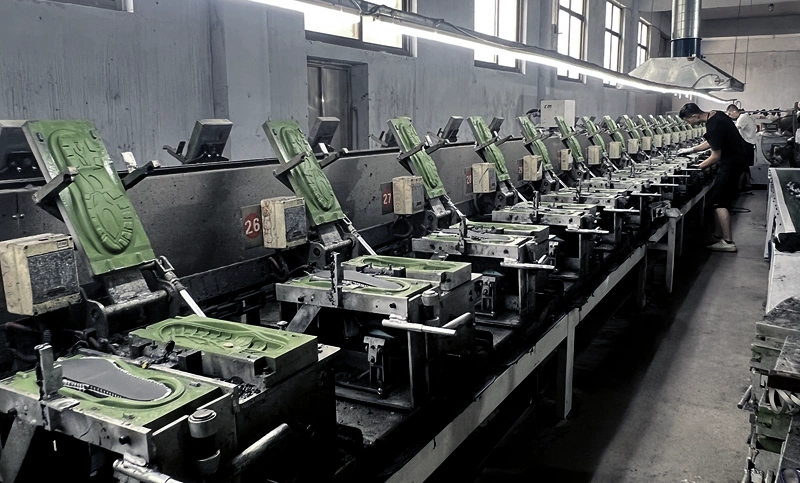
News Information
Shandong Hongjie Safety Protection Products Co., Ltd. and Qingdao Anmaotong Safety Protection Products Co., Ltd.'s safety shoes, with their superior safety performance and reliable quality, have been widely used in numerous industries such as petroleum, chemical, metallurgy, power, automobile, and shipbuilding, serving many large and small enterprises and winning widespread recognition and high praise from customers.
We are committed to providing professional protective solutions for various industries to ensure the safety and comfort of every worker. Welcome to consult and cooperate with us to jointly safeguard your work safety!

To identify the quality of shoes, we need to consider both the appearance and the internal indicators.
Date:
2025-07-15
Assessing the quality of shoes requires examining both their appearance and internal indicators. Since internal indicators often require testing instruments, for consumers, judging shoe quality from appearance is more practical. Appearance-based assessment primarily involves examining the quality of materials (including the upper, sole, and lining) and workmanship. Size can be measured, while craftsmanship is assessed primarily through visual inspection, touching, squeezing, and pressing.
1. Upper
The upper is one of the main components of a shoe. For smooth leather shoes, check for softness and fullness. After pressing down on the upper, see if there is any looseness. A good upper should be full, soft, comfortable to the touch, with a uniform luster and no looseness. For suede shoes, check that the nap is short and even, and the color is consistent. The lining is part of the upper, used to reinforce the upper, prevent stretching and deformation, and improve comfort. Therefore, a good lining material (such as genuine leather) should have a good feel, breathability, and moisture-wicking properties, and should not easily fade. The stitching should be free of wrinkles and excess fabric.
2. Insole
Men's shoes typically use a partial insole pad or heel pad. Women's shoes use a full insole cover. The insole keeps the inside of the shoe clean, covers unevenness on the inner sole, and improves comfort. Therefore, the insole should have good moisture absorption and wicking properties. The insole should be smoothly adhered to the inner sole without wrinkles or gaps.
3. Outsole
From the outside, the outsole should be firmly bonded to the upper with no gaps, and the bottom should be smooth.
4. Heel
Regardless of whether it's a low heel or a high heel, first check if it fits naturally and evenly with the shoe. For women's shoes with heels above mid-height, the following two points are more important: firstly, the heel should be firmly attached to the insole and should not wobble; secondly, the heel base should be no smaller than the bottom of the heel.
5. Inner Sole
First, check the material of the inner sole; genuine leather is best. Second, firmly press the waist area with your hand (the part corresponding to the instep when wearing the shoe). A good shoe will not move. If the shoe's collar deforms under this pressure, it indicates a quality problem.
6. Stability
Place the shoe on a flat surface; it should immediately come to rest. This indicates good stability, a basic requirement for high-quality shoes.
Related Articles
Safety shoes protect the toes in work shoes
2025-07-15
2025-07-15
Future prospects of safety shoes
2025-07-15
